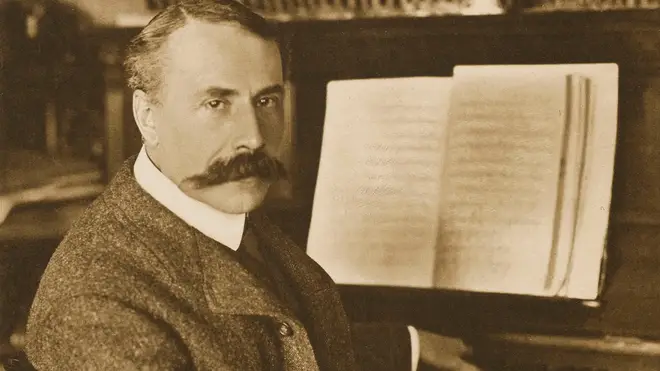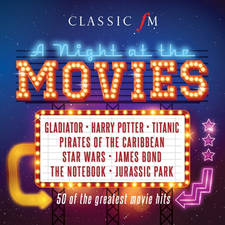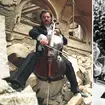10 of Elgar’s greatest pieces of music
28 September 2022, 13:18

From Nimrod to the enduring Cello Concerto – here are the most memorable works of English composer, Edward Elgar.
Listen to this article
Loading audio...
Sir Edward Elgar is one of Britain’s best-loved composers, whose musical influences range from the likes of Brahms and Dvořák to Wagner. Here are 10 of his most memorable works.
Read more: 10 British composers who shaped the nation’s classical music legacy
-
Cello Concerto (1919)
It’s often said that the cello is the instrument that most closely imitates the human voice. Whoever said it first, surely must have just heard Elgar’s Cello Concerto. But while it is now considered an out-and-out masterpiece, its premiere in 1919 was disastrous, and it wasn’t until Jacqueline du Pré’s seminal recording in the 1960s that it began to be considered among the great works written for the cello. In 2020, Sheku Kanneh-Mason became the first cellist in history to reach the top 10 of the UK album chart with his album Elgar, in which the Cello Concerto is the main feature.

Elgar Cello Concerto – Justin Yu and the Joyous String Ensemble
-
Enigma Variations – includes ‘Nimrod’ (1898-99)
Over the years, historians and musicologists have wrestled to solve Elgar’s ‘Enigma’ – a musical mystery that the composer claimed to have hidden deep in the heart of his Enigma Variations. Considered one of the great works to emerge from the 19th century, its high-point ‘Nimrod’, written for Elgar’s friend August Jaeger, today lends itself poignantly to weddings, funerals and moments of national pride – find out why it’s so special here.

Lux Aeterna – Elgar
-
The Dream of Gerontius (1900)
The Dream of Gerontius is widely considered Elgar’s finest choral achievement; on the final page of the manuscript, Elgar himself wrote “This is the best of me”. The work is a setting of a poem by Cardinal John Henry Newman, which follows a man who faces death, and goes before his God before being taken to Purgatory. Originally composed for the Birmingham Music Festival of 1900, Gerontius’s popularity has only grown over time – it was initially poorly received and was banned in some cathedrals for its overtly Roman Catholic references.
Read more: 10 of the best 20th-century composers

Edward Elgar: "The Dream of Gerontius"
-
Violin Concerto (1909-10)
Elgar composed his Violin Concerto for Fritz Kreisler, one of the all-time great violinists. Even Elgar, ever the self-critic, thought highly of it. “It’s good!” he said. “Awfully emotional! Too emotional, but I love it.” Although dedicated to Kreisler, Elgar wrote a dedication on the work’s front page – a quotation in Spanish reading ‘Aqui está encerrada el alma de …’ (‘Herein is enshrined the soul of …’). It’s been argued that if the five dots were Morse code, they could be ‘H.E.’, for Helen Elgar, the composer’s sister – whose nickname in the family was (you couldn’t make it up) ‘Dot’.
Read more: 13 glorious pieces of English classical music

Daniel Hope - Concerto for violin - Elgar
-
Pomp and Circumstance Marches (1901-30)
The Pomp and Circumstance Marches are a series of five marches for orchestra, each dedicated to a particularly close friend, composed over a period of almost 30 years. The title comes from a quote from Othello, and Elgar was delighted at the almost-overnight adoption of his anthemic ‘Land of Hope and Glory’ – a vocal setting of March No.1 – as the second, unofficial National Anthem (although that might just have to go to Jerusalem now).
Read more: What are the lyrics to ‘Land of Hope and Glory’?

Elgar: Pomp and Circumstance / Rattle · Berliner Philharmoniker
-
Salut d’Amour (1888)
Elgar composed Salut d’Amour as an engagement gift for his wife Caroline Alice Roberts – known better, as Alice. She gave him a poem that she had written a few years earlier, and Elgar immediately set it to music, titling it Liebesgruss (Love’s Greeting) and scoring it for piano, later arranging it for violin and piano and orchestrating it, too. On entering the piece into a competition, Elgar won himself £5 – the equivalent today of some £2,600. Not bad for what was intended as a humble token of love.
Read more: Ralph Vaughan Williams’ all-time best pieces of music

Min Kym plays Elgar's 'Salut d'amour' with Ian Brown
-
Symphony No.1 (1908)
Elgar’s First Symphony was loved at its premiere, and today remains somewhat a beacon of hope. Since its premiere in 1908, many have considered it to be the finest symphony ever written by a British composer. Elgar explained, “There is no programme beyond a wide experience of human life with a great charity (love) and a massive hope in the future.” In its first year, nearly one hundred performances were given globally.

Edward Elgar: Sinfonie Nr. 1 As-Dur mit Andrew Manze | NDR Radiophilharmonie
-
Serenade for Strings (1892)
While it wasn’t premiered until Elgar was in his thirties, Serenade for Strings features some of the earliest music written by the composer, its tune a creation by Edward, the young man, who considered it his first satisfying work. Dedicated to E. W. Whinfield – a local musician and builder of instruments – the three-movement serenade mixes the traditional and contemporary.

Edward Elgar: Serenade for Strings in E minor, Op.20 / Academy of St Martin in the Fields
-
Introduction and Allegro for Strings (1905)
The inspiration for Elgar’s Introduction and Allegro for Strings came from a chilly walk along the Welsh coast, where the composer heard a distant choir. He stashed the tune away, and eventually used it for this work, which features both a string quartet and a string orchestra. It was written originally for the strings section of the London Symphony Orchestra, in its early beginnings.

Elgar - Introduction and Allegro - A Far Cry
-
Sea Pictures (1894)
Sea Pictures, a work based on poems by five different authors, is the only song cycle Elgar wrote for voice and orchestra. For the vocal role, Elgar set his sights on English contralto Clara Butt, about whom Sir Thomas Beecham once noted that “On a clear day you could have heard her across the English Channel!”. At the premiere in 1899 at the Norwich Festival, conducted by Elgar, Butt dressed as a mermaid. Each setting offers a different musical picture of the ocean – from its beauty, to its dangers.

VICTORIA MASSEY: Edward Elgar - Sea Pictures



























